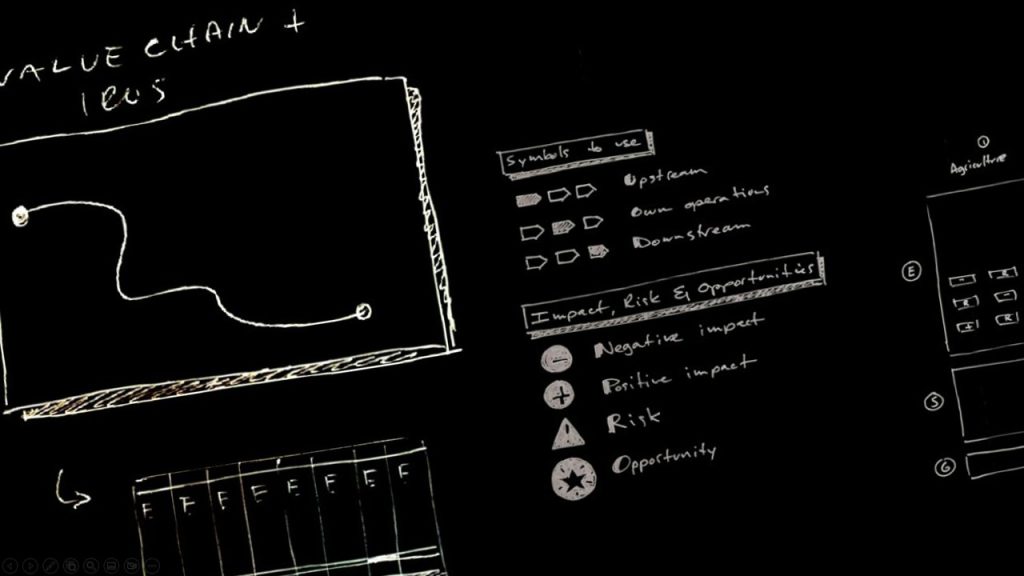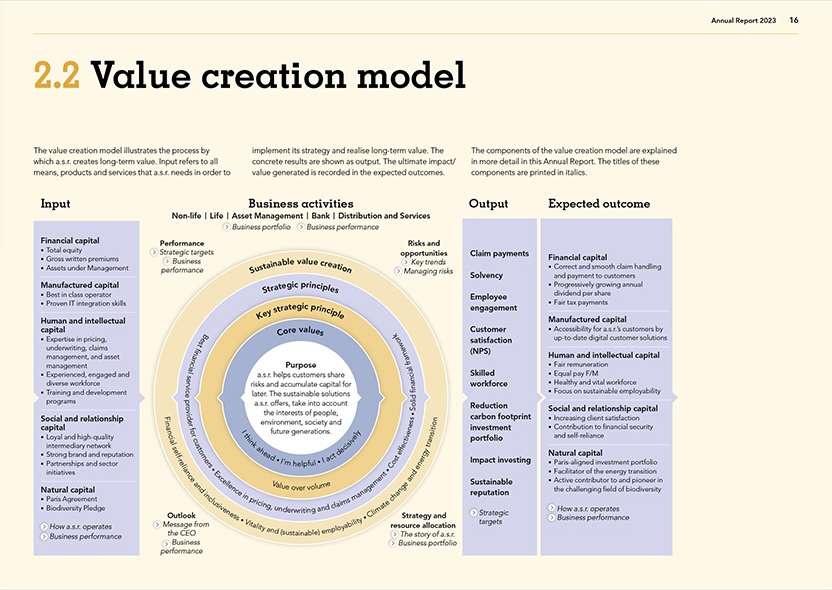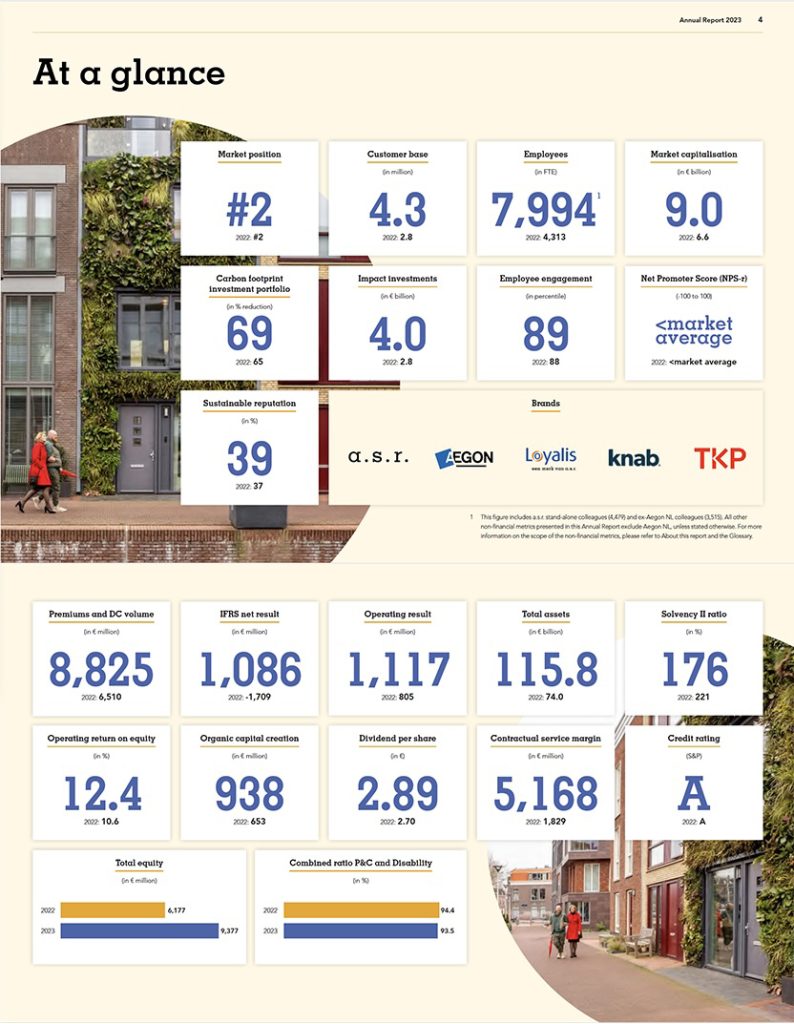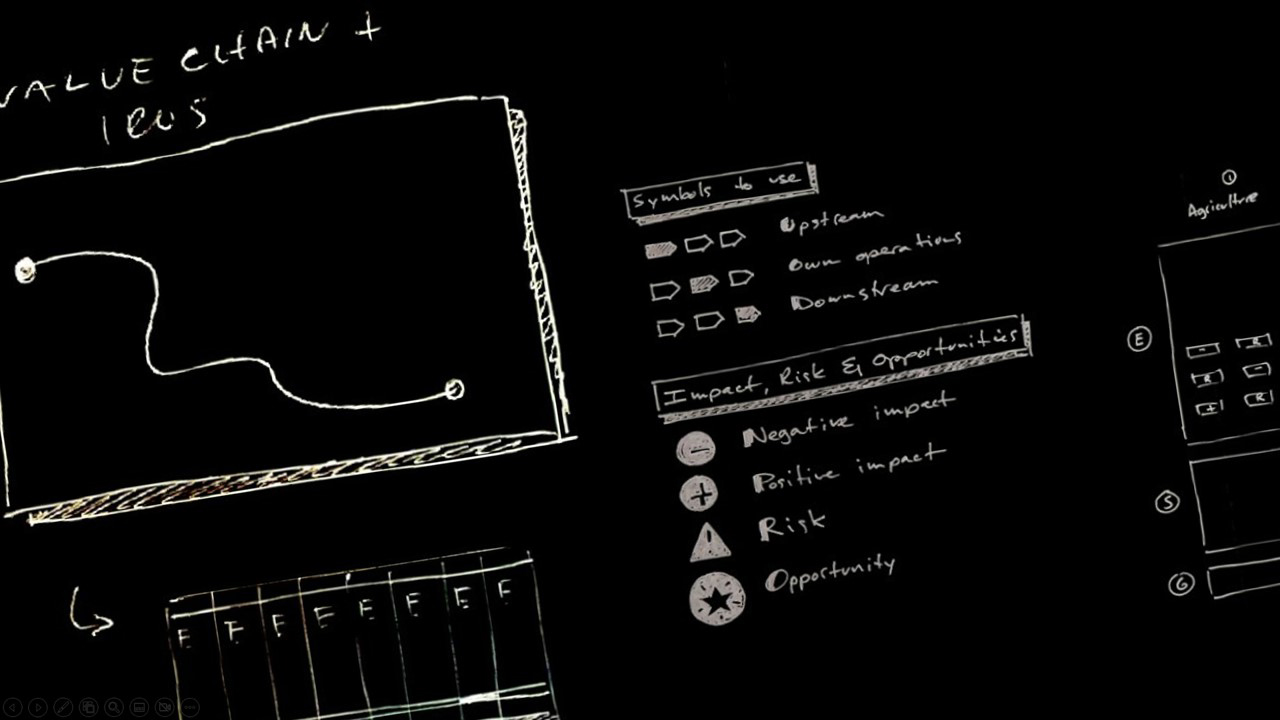
With new regulations pushing organizations to adopt a fresh perspective on transparency and sustainability awareness, design has become an indispensable and decisive factor in the success of publishing an annual report.
The Corporate Sustainability Reporting Directive (CSRD) mandates organizations to report more comprehensively on their environmental, social, and governance (ESG) impacts.
Design not only clarifies complex information, making a report more accessible, credible, and persuasive, but it also enables the creation of a compelling and unique narrative. This, in turn, drives engagement and enhances brand reputation. The strategic value of design in developing annual reports cannot be overstated.

Visual processing and memory
Have you ever found it easier to remember where information was located on a page rather than recalling the exact wording? This is because humans primarily process information and form memories visually. Whether it’s a person, situation, or object, our brain creates an “image” within a mere quarter of a second. It’s no surprise that visuals always tell a better story than words. This isn’t a cliché; it’s science. Use it!
Enhanced clarity and understanding
Design organizes information in a logical manner, making it easier for readers to grasp key messages and digest critical information. Visual elements such as charts, graphs, and (interactive) infographics transform raw data into meaningful and accessible insights, allowing stakeholders to make informed decisions.
Design highlights critical data points and key performance indicators, helping stakeholders focus on what truly matters. By prioritizing essential information, readers are not overwhelmed by numbers. Design provides structure, establishes hierarchy, and offers clarity to readers.
Aligned and tailored
Annual reports are often filled with figures and complex financial information. Design transforms this abstract data into a clear and appealing visual presentation. For example, clever infographics can make even the most complicated data understandable, allowing readers to move through the story quickly and effortlessly.
Good design is strategic and purposeful. Ensuring overall brand alignment is vital to claiming ownership and fostering acceptance and credibility.
Today, stakeholders—not just stockholders—are the primary audience for annual reports. Different stakeholders have varied information needs and expectations. Effective design customizes information to suit these diverse audiences, making reports more relevant and engaging.

Impact, authenticity, and credibility
Visuals have significantly more impact than textual information when conveying emotions. Often, the emotional effect of an image is unconsciously transferred to the information it accompanies. In other words, visual elements—such as thematic photography, functional color schemes, clever graphs, clear tables, and smart layouts—not only reinforce the message but also improve understanding and retention.
The more effectively visuals are used in a report, the better it supports its broader communication goals. Ensuring brand alignment is crucial for claiming ownership, reinforcing acceptance, and bolstering credibility.
A visually appealing report aligned with the brand and narrative demonstrates the organization’s commitment to transparency and integrity. It reflects attention to detail and showcases dedication to excellence, fostering trust among stakeholders.
Today, annual reports tell powerful stories about what an organization stands for, what it has achieved, and where it aims to go. Design plays a key role in crafting an authentic and captivating narrative, setting an organization apart in a competitive landscape. Design has the power to captivate, inspire, and connect. The strategic use of design elevates corporate reporting into an essential communication asset.
In a nutshell
Design is by no means mere report decoration. It significantly impacts corporate reporting by influencing how information is perceived, understood, and remembered. Design enhances credibility, communication, and stakeholder engagement, fostering transparency and trust. Successful corporate reporting depends on design.
© Gert Noppen, 2024
